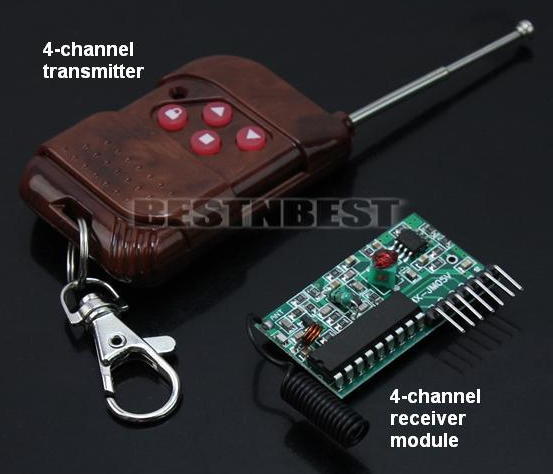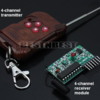Stan, I confess I'm having trouble understanding how that is working. Why does the light to Q1 only hit it in one direction?
I suppose the picture should be drawn better but you link to the positional sensor methods shows the quadrature (2 sensor) waveforms pretty clearly. This method requires stripe(s) on the wheel so that Q1 and Q2 turn on and off.
With alternating white/dark "stripes" on the wheel (as shown in an earlier post), as the wheel spins either 0, 1 or both of the Q1 and Q2 are active. If the wheel spins FWD, Q1 will turn on before Q2. If the wheel spins REV, Q2 will turn on before Q1. The flip-flop (74HC74) looks at this relative relationship (i.e., which came first) to decode the direction when a stripe moves past the sensor.
The more alternating stripes that can be crammed onto the inner wheel face, the faster the circuit can decode the direction since it takes a transition to activate the flip-flop to do its thing.
I didn't realize you had stripes on the wheel, mystery solved! ![]() I though you were just looking at the road surface, that's why I was baffled.
I though you were just looking at the road surface, that's why I was baffled.
MTH has a perfect sticker for the wheel in the PS/3 stuff, it's their encoder that goes on the inside of the motor flywheel on the side like a wheel.
I'm guessing you need a pretty narrow aperture for the sensing photo-transistors so that you can control the field of view if you have more stripes. Knowing what you're doing, I can see why you only have a few stripes on the wheels, the field of view is pretty wide.
That certainly does seem pretty practical, I like it! ![]()
Neat! Thanks Stan. I may be able to give this one a try.
Thanks!
Well, I'd use a bridge rectifier simply because they're inexpensive and it relaxes the size of the capacitor filter. You'll find that you probably want to implement some kind of flicker reduction (i.e., capacitor) not just for the marker/headlight LEDs but for the photosensor LED too. That is, a voltage drop-out from dirty track also flickers the infrared LED and can confuse the direction circuit.
Then, with the cap in place you now need the 22uH inductor/choke for the DCS signaling filter.
If you're going to pull the trigger on this, what your sensor will be (did you find a mouse sensor assembly that can couple to the wheel and what hookup does it have?).
If you're serious about trying this out, I suggest we come up with a more complete schematic including the 7805 or whatever for +5V.
Stan, can you adjust the sensitivity of the phototransistors if you have issues with proper pickup? Perhaps changing the value of the 10K load resistor?
Yes. Changing the 10K load resistor adjusts the output voltage variation for a given detected IR variation.
The reflective method is by no means a slam-dunk. There is experimentation to put it into the sweet-spot of operation. For example, on the diesel truck anyway there's noiticeable axial-play on the wheel axle. The wheel moves toward or away from the sensor assembly. Obviously you'd want to "center" the sensitivity so that all's well around curves or whatever moves the axle relative to the truck. Actually what surprised me the most was that the wheel surface itself does NOT reflect IR energy very well. I thought I'd have to put "black" stripes in addition to "white" reflective stripes.
I don't have a subway but if I were doing this I'd first figure out how many of my fellow subway operators would want this. That is, I'd approach the design differently depending on if I were building several vs. a one-off. There are smaller IR LEDs and phototransistors than the 3mm-sized parts I happened to have. The photo shows the 3mm package vs. a paired IR emitter-detector as used in an MTH speed sensor vs. a surface-mount 0805/2012 part which IR emitters and detectors come in too. The cost in small quantities is about the same in each case.
BTW, for those not familiar with using these IR devices, you will commonly see a dark lens on the detecting device (phototransistor). The plastic used is engineered to pass IR energy and blocks (filters out) visible light energy. Obviously this makes it appear "dark" to the human eye but is clear like a glass-window to the IR sensor.
Attachments
Well, MTH uses it for speed control, so it's at least something that's possible. ![]()
Well, MTH uses it for speed control...
Yes, and here I'm thinking how easy it would have been for MTH to have installed something in the trucks to detect reversing - a friction switch or whatever. OTOH, Nothing is so easy as the job you imagine someone else doing!
At $5 per use, I think I now owe you $20 ![]()
I'm keeping the account Stan, don't worry that I'll lose count! ![]()
![]()
Of course, if you building a powered unit, you already know which direction you're going, so it's only for dummy units it's an issue. Lionel has solutions, I'm a bit bummed that MTH doesn't have a DCS module that just manages resources in a dummy as well.
MTH does. They manage it via wire harness. Even PS-1 had a wire to detect when in reverse and turn on a directional light in trailing dummy or even a slaved unit.
We are in the realm of adding something that wasn't meant to be integrated.
G
George, I was talking about an independent module, not one wired to the engine. ![]() I'm thinking something that receives the DCS commands and independently determines the direction, similar to when you MU engines.
I'm thinking something that receives the DCS commands and independently determines the direction, similar to when you MU engines.
It looks like I may just get to Radio Shack tomorrow to buy the components for this.
I will certainly let you all know when it's done.
Radio Shack does not sell the ICs so this will be on hold until I get them.
Right now I'm just using grain of wheat bulbs dipped in Tamaya Clear red acrylic paint.
I have several of those. I tested one with I got them, and it certainly has the range. You obviously took it a step farther. ![]()
I have not forgotten about this but I have not been able to get the chip to build the circuit yet.
Which chip are you looking for David?
Which chip are you looking for David?
The 74HC74 that Stan showed in his schematic back aways in this topic. From what I understand it's a "popcorn" chip - common, cheap, and easy to get in bulk quantities. I only need one though so I'd end up paying more postage than the chip price.
I'm late to this discussion, but two questions. First, early on in the discussion GRJ suggested using a wireless remote as a way of changing the 'state' of the lighting in the dummy car. Why is that not a good idea? I didn't see any pickup on that suggestion and it seems pretty cheap (his eBay link shows a device that costs ~$3.50). While the later suggestion of a circuit to detect direction of travel (in this case, wheel rotation) is interesting, that requires actual motion to trigger the lighting change, which probably isn't prototypical (?) - not to mention some (maybe a lot) of fussing around with the detection circuit that probably costs more than $3.50.
Second, perhaps dumber, question. It isn't clear to me how the directional control of the motorized unit is done - DCS perhaps? I'm not clear on how DCS works in detail, as I don't use it, but aren't there circuits that could be used to detect that signal so when the directional signal to the motorized unit is sent (via the track?) the dummy unit will also see the same signal?
The easiest way for DCS if you have directional lights is to just camp on the reverse light. When it lights, you change state and put the train in reverse.
I'm late to this discussion, but two questions.
1) The idea was picked up and discussed though now I can't find the posting or it may have been a different thread. But here are some pictures and video from the earlier discussion. As shown in video, the RF transmitter module in the engine sends its directional light info to the RF receiver module in the tail car. In this case it was a MTH PS2 engine. Note that by using the directional light in the engine, this method works for both conventional or command operation which IIRC was a desired feature.
2) Part of the issue was to function in both conventional (using, say, a reversing E-unit sensing track voltage pulses) and command (using DCS digital control over the track). In each case, it's possible for the two parties to get out of sync (by missing a command that the other heard). Additionally, as I believe the discussion was specific to MTH subways, you can't buy a reasonably-priced (considering the goal it to light a few LEDs) DCS receiver.
Sorry for the brief answers but a longer-winded version was included in the original postings but I can't find it!
Attachments
Here's an even more compact transmitter/receiver pair that will set you back a while 99 cents.
Transmitter Module And Receiver Link Kit For Arduino/ARM/MCU WL433Mhz
Stan and John - thanks. the idea of firing the wireless transmitter off the engine light circuit is brilliant - or at least well lit (!). Seems to me this gets one out of all sorts of other fooling around with other sensing circuits (direction of motion, accelerometers, etc.). I can think of a lot of ways to use these wireless controls - especially since they seem to be very cheap. I guess the only impediment is finding a way to squeeze (another) board inside the engine shell...
Perhaps the repeated beatings have dulled the pain but I've been badgering imagining you using that module pair and a PIC microcontroller (or whatever) to activate simple features in rolling stock by remote control.
You need to modulate the RF to send addressable commands otherwise everyone responds at once. In addition to the un-tethered reversing light application, you could slave an entire passenger train to turn its lights on/off when the engine's Interior lights are commanded on/off. Or you could hook the transmitter to a AIU/ASC relay output to remotely activate just about anything in rolling stock.
Nothing is so easy as the job you imagine someone else doing...
Attachments
I tinkered with the 99 cent one on the bench, and I'm waiting for the contacts for the locomotive PS/3 connectors to come in to try to remote the reverse light on my Aerotrain I'd like the backup light to come on in reverse, this looks to be a way to do that.
As I said in an earlier post, if I have the schematic or diagram I have no problem putting it together. The photo of the receiver breadboard is not clear to me. It's still something I would like to do.
Well, I haven't worked out all the details, so I can't really post a diagram just yet.
Here's an even more compact transmitter/receiver pair that will set you back a while 99 cents.
Transmitter Module And Receiver Link Kit For Arduino/ARM/MCU WL433Mhz
John, How does this work, no instruction on the site. Power via 5VDC, the what data triggers it to transmit? A single voltage pulse from a Reverse light lead?
On the receive what is the output and is it also powered via 5VDC? Is the output the 5VDC? G
Yep, it's a pretty basic unit. The transmitter just has power, common, and input. The receiver has power and the output logic level.
I tested it on the bench, but I haven't pressed it into service just yet. I got several sets, I have a number of ideas to their use. None of these things come with instructions, you have to either copy them from the ad or email them for a copy.
I've attached my compiled instructions for this pair.
Attachments
Doesn't really tell you what kind of load it can handle. G
Strictly logic loads George, a few milliamps.









